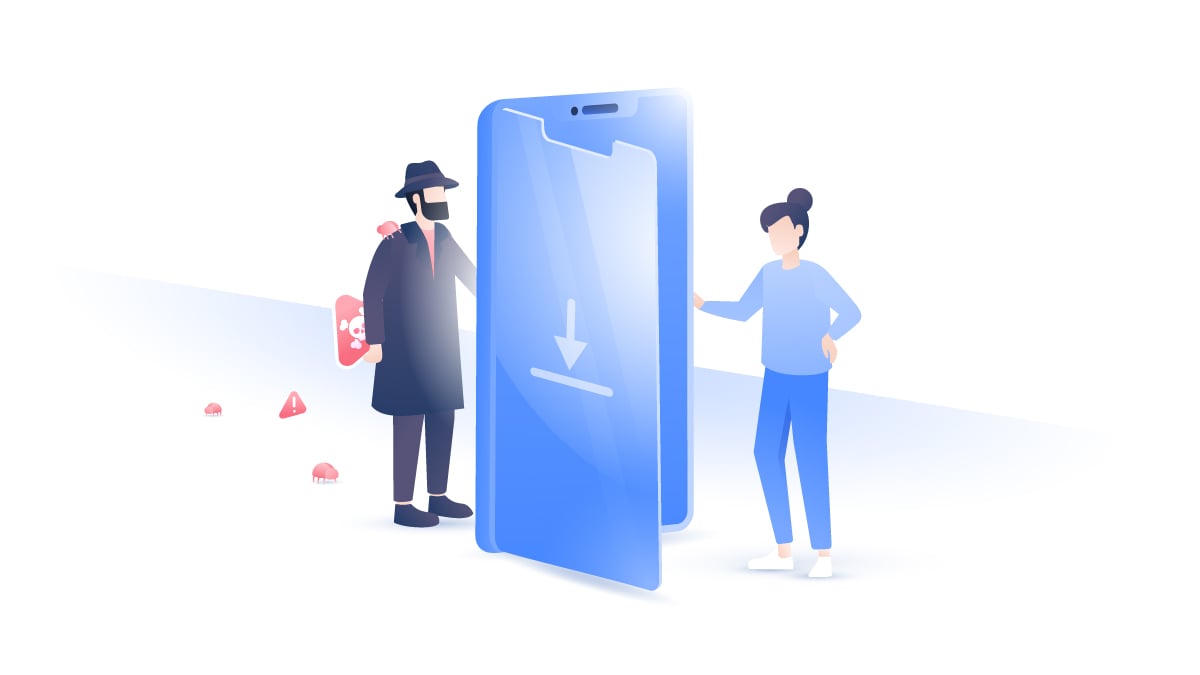Not-a-Virus: What is it?
Your antivirus has detected something called “not-a-virus”. While it isn’t a virus, you should still be worried. What is “not-a-virus” and how can you stop it?

What is “not-a-virus”?
Your antivirus is built to detect viruses (malicious programs that could harm your system). However, an antivirus tool will also flag adware and riskware hidden inside apps as causes for concern. It labels these threats as “not-a-virus”.
Are riskware and adware viruses?
No, but riskware and adware can be used to cause the same damage a virus can. (Here are some of the worst computer viruses).
Riskware and adware have potential to be harmful and can pose huge risks to our privacy, here’s how:
Potential harm
Riskware describes certain apps that could damage your device if installed.
Riskware can be embedded into legitimate apps, which, if in the hands of malicious users, can be used to block, delete, modify, and copy data or disrupt the performance of your device.
Potential privacy risk
Adware is responsible for those annoying pop-up ads you get when you’re using the app. If clicked on, some of these ads can install viruses and malware onto your device. Here’s how to remove adware from your phone.
Even legitimate apps can carry adware that tracks your behavior so the owners can sell it to advertisers to make money. It’s near impossible to tell which parts of your data are being sold — it could be your name, date of birth, how often you use the app, etc.
What are the symptoms of having a “not-a-virus”?
- Banners of online adverts are injected with the websites that you’re visiting
- Pop-up ads appear and recommend fake updates or other software
- You might find programs and apps on your device that you didn’t install yourself
What triggers “not-a-virus” warnings
1. Remote admin apps
Remote admin applications are often hiding in malware packages. If you know you’ve downloaded a remote admin app, that’s great. But if you didn’t, it’ll be flagged as “not-a-virus”.
2. Download managers
Download managers can be sneaky devils. Some have been known to download extra files while showing a grey notification using a grey font in order to trick you into giving your consent. That’s why your download manager might be flagged by your antivirus as riskware, and thereby “not-a-virus”.
3. Browser toolbars
Some browser toolbars support adware as part of their features, which might be flagged as “not-a-virus” (riskware) by your antivirus software.
4. Bitcoin miners
Miner apps leech off your device’s computing power to mine Bitcoins, using your device as part of a swarming botnet. Mining apps will slow down and disrupt your device, and could have been installed without your consent as part of a malware package.
How to protect yourself against “not-a-virus” warnings
Antivirus software will only inform you of a potential threat with a “not-a-virus” warning. It won’t block or delete riskware, as it can be a functional aspect of some apps.
Here’s how to stay vigilant:
- When you download an app, always read its policy. You can opt out or choose how your data is shared and used by the app.
- Most antivirus tools have a “Threats” and “Detect other software” section in their settings. Enable this setting to be informed of riskware that has creeped into your device without you knowing.
- Use a malware-cleaner app to scan and remove malicious files from your device.
- Use a VPN to reduce pop-up ads that could be loaded with malware. The NordVPN app won’t detect malware, but its Threat Protection will notify you about dangerous websites and reduce pop-up ads that can infect your device if you click on them. Threat Protection will even scan downloaded files for any executable malware — once detected, the file is deleted. NordVPN can do all of this while securing your online data against spies and miners.

